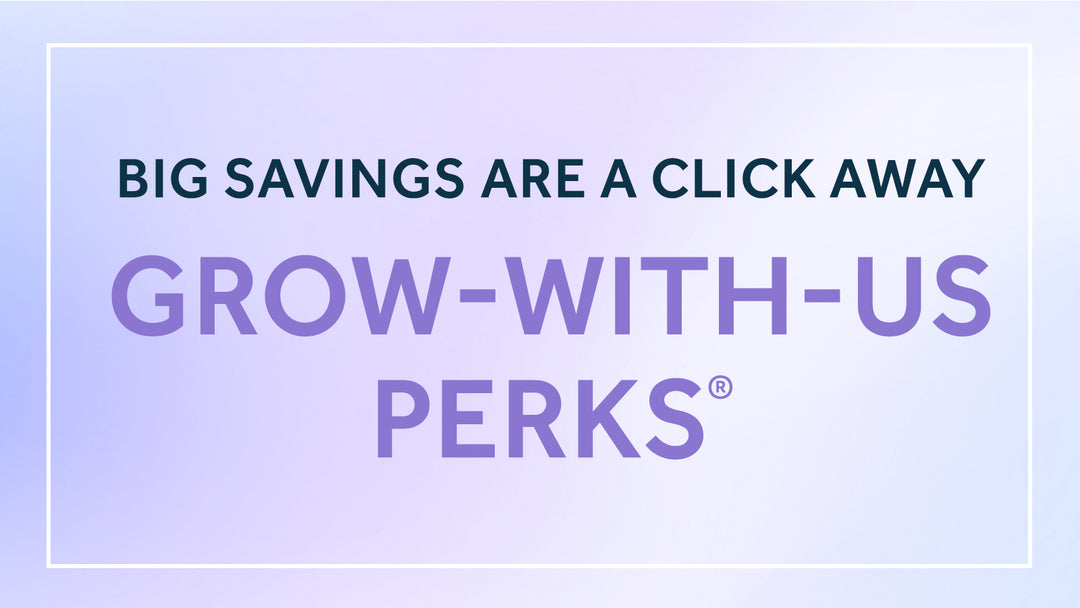How to Fold Baby Clothes
When you’re a new parent with a growing infant, you need plenty of baby clothes. Thankfully, you should receive several different types of newborn garments at your baby shower. You’re also sure to get extra items from your loved ones before your little one is born. Knowing how to fold newborn Onesies® Brand bodysuits, two-piece sets, and pajamas will help you to save space in the nursery.
Get started by reading our how-to guide on how to fold baby clothes. When you’re done reading each step, you’ll feel more confident about the task. Since your little one’s room will be more neat and clean, you’ll also reduce stress.
Baby Bodysuits
Our Onesies® Brand bodysuits are popular among new moms and dads. They’ve been family favorites for generations because of their cuteness and convenience. Our bodysuits snap at the crotch to make diaper changes simple, even in the middle of the night. By day, they look adorable with pants, leggings, and shorts. They’re even a comfortable choice for restful napping and sleeping. Their ease of use extends to folding and storing, which is more good news for busy families and first-time parents.
Start folding your bodysuit by placing it on a table or another flat surface. Make sure the front of the garment is facing you. Next, fold the sleeves one at a time to the back of the bodysuit. Bring the bottom portion of the bodysuit up to the top. This will fold it completely in half. Once you complete this step, you can place it in a drawer or on your nursery shelf.
Leggings & Pants
Whether you have sweatpants, leggings, or baby jeans, you’ll fold them all the same. Place the pants on a flat surface, then take one of the legs into your hand and fold it over so it is sitting directly on top of the leg on the opposite side.
Next, bring the bottom of the pants up to the waistband. After you crease them, this makes the final fold. With this technique, you should be able to stack several styles of pants on top of one another.
Shirts, Tees & Tops
This folding technique is perfect for baby tees, blouses, and sweaters. Whether you have a long sleeve or short sleeve, you’ll crease it the same. Start with the bodysuit technique: with the front of the garment facing you, fold each of the sleeves to the middle of the back.
Next, take the bottom of the shirt in your hands and pull it to the middle of the back, on top of the sleeves. Finally, you’ll take the bottom part of the folded portion and pull it up to the top of the shirt. Once you’re done with this process, your tops are ready to put away.

Rompers & Footed Pajamas
Longer baby clothes, such as rompers, footed pajamas, and union suits, require their own folding method. Start by laying the garment so its front is facing you. Again, you’ll crease the sleeves back, so they lay on the backside of the outfit.
Now, you’ll fold the legs upward and to the back. Once all the extra parts are creased up, you’ll fold the whole outfit in half. For the tightest pleat, be sure to pull the bottom part up to the top.
Baby Accessories & Dresses
Keep baby socks together by folding them over one another. They’ll stay tidy if you place them in a drawer or in a caddie attached to the nursery closet or door. Beanies and hats can be stacked flat on top of one another.
Fold swaddling blankets and receiving blankets just as you would a throw in your living room. Some parents like to place these in the nursery dresser or in a drawer under their baby’s crib. You can also store them in an organizing bin inside the closet. For more information on how experienced moms store their must-have newborn items, read our guide on how to organize baby clothes in rooms of all sizes. If you’re storing dresses, hang them in the closet. This will help to prevent wrinkling. It also helps to avoid disorganization inside drawers and storage compartments.

Keeping Baby’s Clothes Organized
Once your precious baby is born, life will become more fun and busy. It’ll also be a bit messy! Thankfully, there are ways to make sense of the clutter. To help keep your baby clothes in check, fold them in the ways we mentioned above. If you follow each step, you should have more space inside each storage area. Each garment will also stay neater and wrinkle-free.












